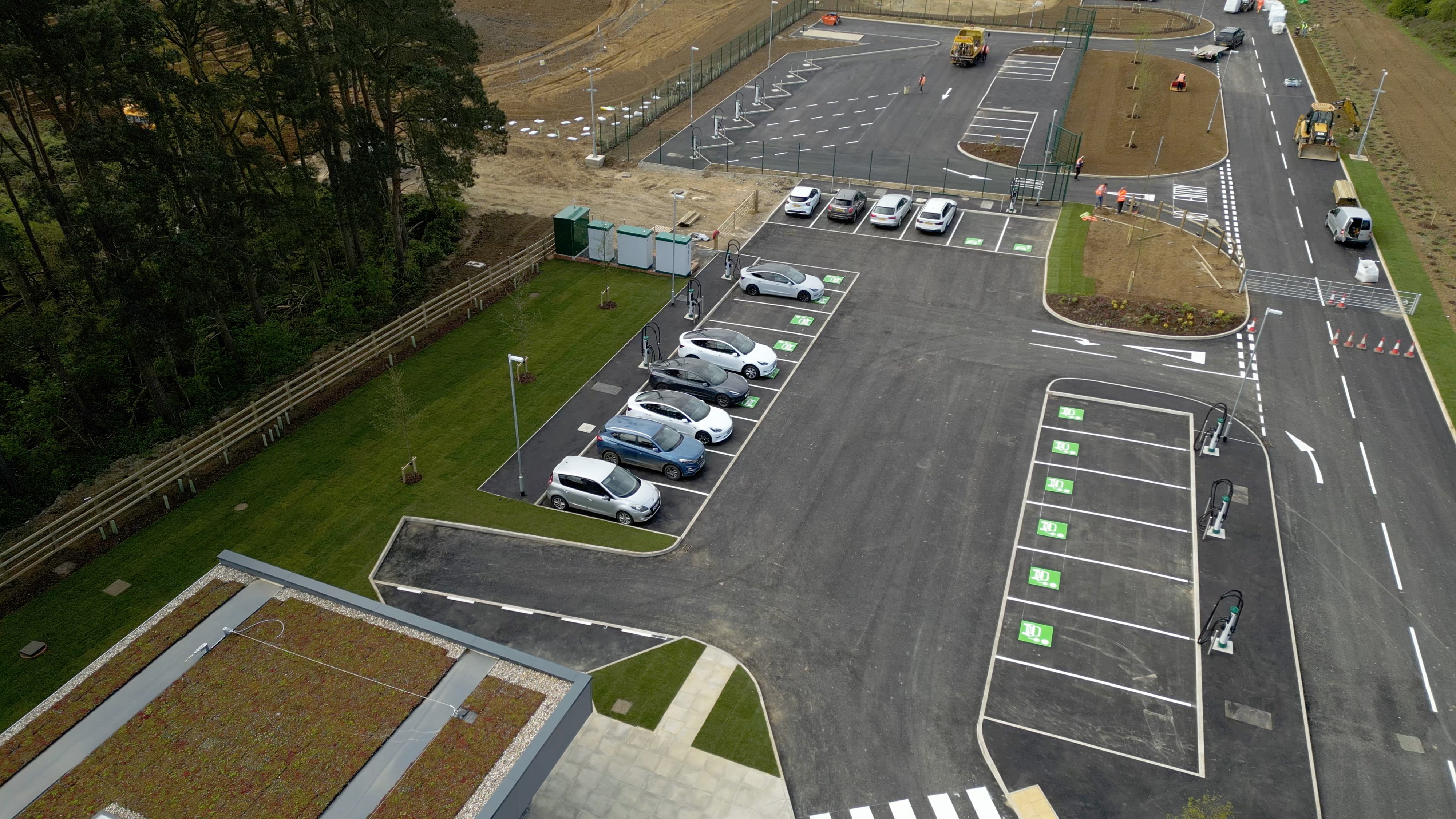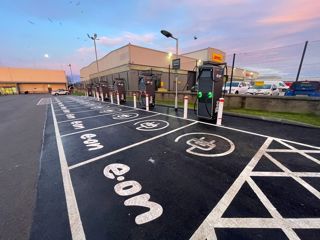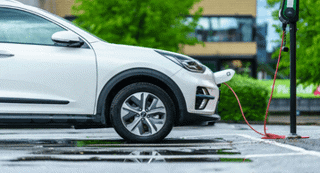AW Energy is using renewable energy generated through wind turbines to power its ultra-rapid charging stations and cut charging costs by as much as 50% to 39p per kWh.
This compares with Zap Map’s latest Price Index for September shows an average cost of 80p per KWh for an ultra-rapid charger.
AW’s Checkley Wood charging station, near Leighton Buzzard, is now open to the public and already accepting electric LCVs, as well as electric cars.
The company is planning to accept electric buses and larger commercial electric trucks before the end of this year.
The site, which is owned by AW Energy and paired with a Starbucks franchise, features 14 Kempower ultra-rapid chargers, with extra-large bays measuring six by three metres.
Major fleet operators, including Amazon, Openreach, and DPD are already using the charging facilities to top up their electric vans.
In addition to the public charging area, AW Energy is developing a commercial zone at the back of the site, designed for buses and larger electric commercial vehicles.
This area will initially include four ultra rapid chargers, with plans to expand to seven.
The commercial vehicle charging area will be launched collaboratively with the local bus service to make sure this fleet can be serviced overnight, in addition to the additional capacity needed for larger commercial electric vehicles using the site during the day, as well as evenings.
Renewable-powered charging
One of the key factors enabling AW Energy to offer such a low price is integrating renewable energy directly into the charging infrastructure.
The site is powered by a 4.1 MW wind turbine, which will cover around 90-95% of the site’s energy needs by March 2024, significantly reducing the reliance on grid electricity.
Currently the turbine is generating electricity and putting it into the grid, then the charging station is drawing that back out of the grid.
However, the site will be installing a “direct wire” load management system in place by March 2025 that will send the energy straight from the turbine into the Kempower ultra rapid chargers.
Further upgrades are planned to put battery storage systems in place so any excess energy generated that isn’t currently being used by EVs can be stored and then used at times when greater capacity is needed.

AW Energy managing director, John Fairlie, said: “We’ve worked collaboratively with Bedfordshire Council on this project and invested a significant amount.
“The local authority has been incredibly supportive, but it’s been a seven-year process to get to this point.
“We’ll take what we’ve learned from this project and the next locations will be much quicker as a result.”
Fairlie wouldn’t share the exact investment figure for Checkley Wood, but did say the economic model for the concept makes sense “otherwise we wouldn’t be able to carry out projects like this”.
The wind turbine is one of the largest in the UK and AW Energy says it produces enough power to cover the annual energy needs of around 2,800 homes, or to charge up to 250,000 vehicles from 20% to 80% battery capacity annually.
Fairlie explains that the expansion of the commercial charging area reflects the growing market for electric trucks and buses.
“With new electric truck models from manufacturers like Mercedes, Iveco and Renault, we’re seeing strong demand from larger vehicle operators,” he said.
Expansion plans and Government support
AW Energy’s low-cost charging model is part of a broader strategy to expand renewable energy-powered EV charging across the UK.
The company has already secured consent for a second site in Bedfordshire, which will feature a combination of wind, solar, and battery storage to power its ultra-rapid chargers.
Fairlie also emphasised the growing support from the UK government for renewable energy projects.
“The previous government’s planning rules around onshore wind made projects like this more difficult to implement, but the new Government has set a target to double onshore wind capacity,” he added.
“This change in policy will enable us to roll out more sites quickly, helping to meet the urgent need for more EV charging infrastructure.”
AW Energy plans to develop a portfolio of around 10 sites across the country, all following the same model of linking renewable energy with direct wire systems to EV charging.
However, Fairlie says these new locations will likely feature smaller wind turbines and be scaled to match the renewable technology to the estimated load demand of each EV station.
This is expected to help speed up their delivery, in addition to taking all the learnings from the Checkley Wood location.
























ross.baxter@sciensus.com - 28/10/2024 13:58
Well done AW Energy. The price of public charging is one of the barriers to EV adoption,this is a step forward.